Launch of the Tonamino Sankyoson Sustainability Promotion Council to preserve the scattered village
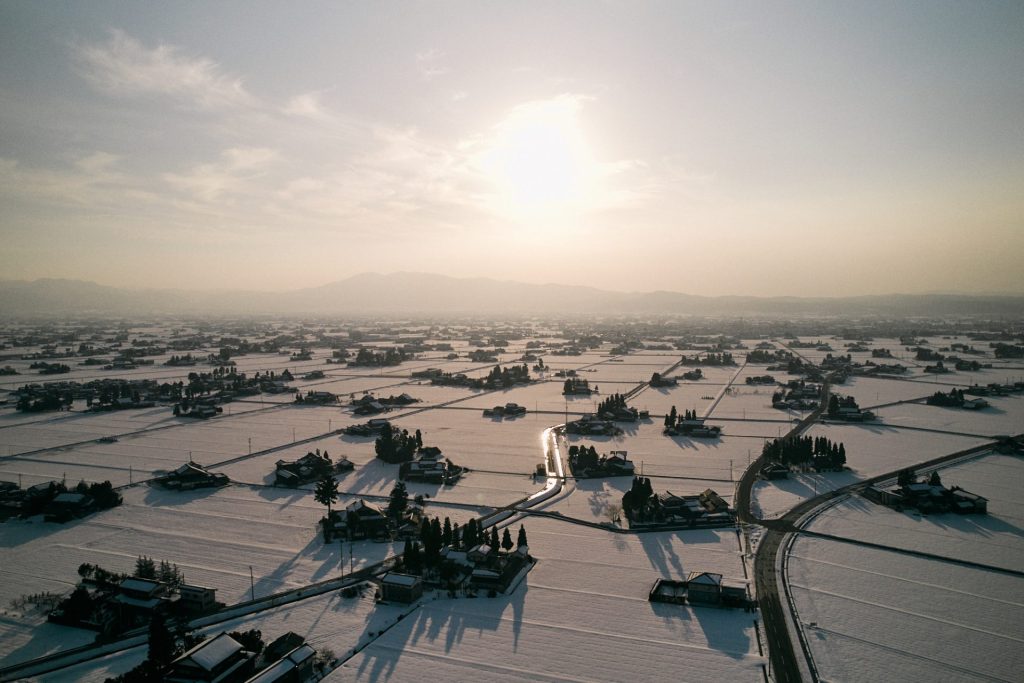
November 28th, 2024
On a sleet-filled night typical of winter in Hokuriku, many people gathered at the Sankyoson Scattered Village Museum for the founding meeting of the Tonamino Sankyoson Sustainability Promotion Council.
This was the first meeting of the council aimed at conveying and formalising the value of the sankyoson scattered village area, with the goal of registering it as a “cultural landscape,” a “nature coexistence site,” and eventually, a World Heritage site.
Rakudo-An’s efforts to promote regenerative tourism have been recognized by the Japan Tourism Agency as a “Model Project for Strengthening Sustainable Tourism Content” (2022-2024) and as a “Demonstration Experiment of ‘Regenerative Travel’ Leading to the Preservation and Utilization of the Scattered Village.” We have held meetings with stakeholders, including private organizations, government agencies, and financial institutions, as well as seminars for local communities to learn about frameworks for cultural assets such as circular economy, modern luxury, and cultural landscapes.
As our meetings continued, we realized that there was a limit to how much could be done through individual effort, and we received feedback from local residents that a promotional body was necessary for the value of the area to be recognised, leading to the formation of this council.
In addition to existing participants, new members also joined the council, including representative Kimura of the new local business PLAY EARTH PARK, Chairman Yonehara of the Tonami Chamber of Commerce and Industry from the business world, Kaori Nakano, a fashion historian who spoke at the Scattered Villages Seminar, and Takako Kajikawa, who uses Kainyo Mix essential oils at a SPA in Shinjuku, bringing the total number of participants to 34.
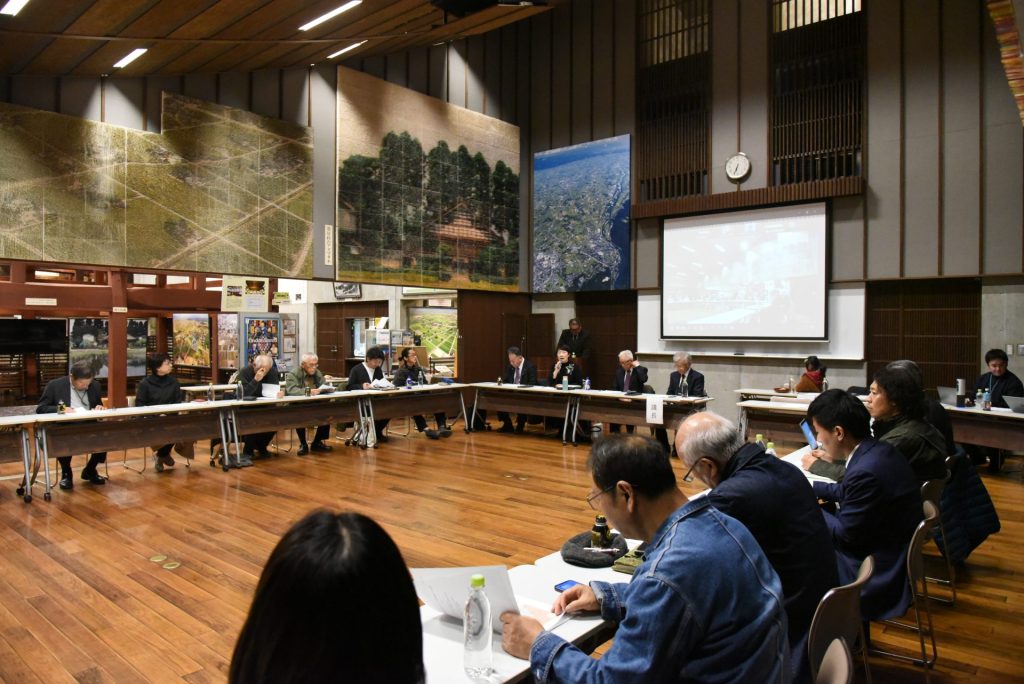
“I’ve always felt that there’s no place as wonderful as this”
Sari Hayashiguchi, CEO of Mizu to Takumi and producer of Rakudo-An and Moritosha thanked the members, remarking that she was “surprised and delighted” that so many people had come together to participate.
The meeting began with Hayashiguchi handing over a donation collected from the accommodation fees at Rakudo-An to Matsuda of the Kainyo Care Support Team, which will be used to protect the scattered villages, as it did last year, followed by a speech from Council Chairman Masao Shindo.
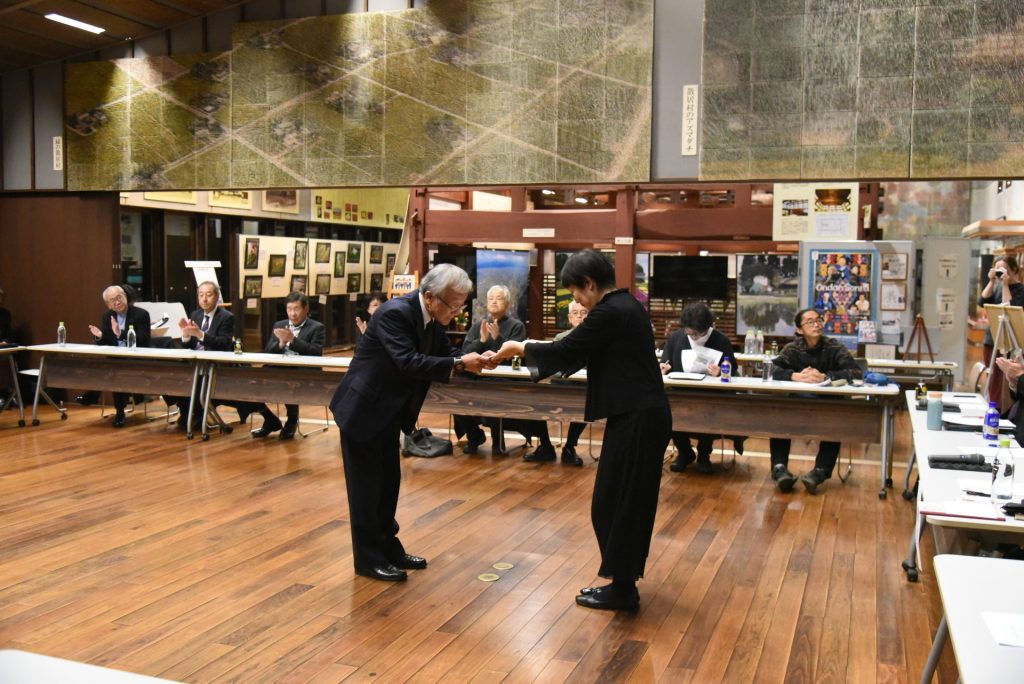
“I am truly grateful that we are now able to establish this council.” Shindo explained “I was born in 1933, and I still live in a house in the scattered village. When I wake up in the morning, the first thing I do is walk around outside and look at the trees around my house.
The Tonami Plain’s scattered villages are the largest and most distinctive in Japan, and many papers have been written about them in the fields of geography and history. I studied geography myself, and have visited scattered villages around the world for research and tourism, but I still feel there is no place as wonderful as this one. After the war, scattered villages were among the most prosperous farming villages in Japan, thanks to the spread of farmland improvement and rice tilling machines, which were pioneers in the country.
However, in recent years, the situation has changed, with a declining birthrate and an aging population, and the vitality of the region is being lost. I have high hopes for future activities to see how we can pass on the wonderful aspects of this place to future generations.”
Past efforts towards regenerative tourism
Following Chairman Shindo’s speech, Hayashiguchi gave an overview of the activities that have been carried out through Rakudo-An.
In terms of creating and providing tourism content, Rakudo-An offers a variety of activities which help people learn more about the local culture, and are sold through domestic and international travel agencies. Particularly popular experiences include the “Etchu Isami Taiko Experience,” “Daimon Somen Noodle Making Experience,” and “Calligraphy Experience at Koenji Temple,” with some customers even visiting the area from abroad just to experience these activities.
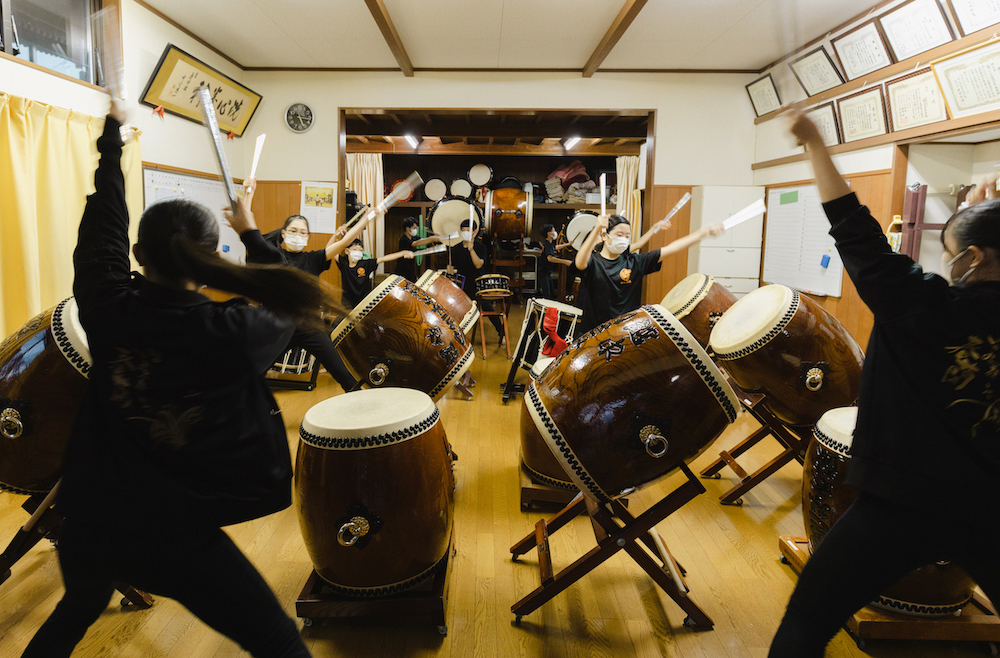
In the past two years, the hotel has been featured in 143 domestic and 133 international media outlets. About 40-50% of guests are foreign, primarily from Europe and the United States, but there is also an increasing number of guests from Asia, including Singapore.
Since its opening, Rakudo-An has donated a portion of its accommodation fees to organizations aimed at preserving the sankyoson area, and this year we were able to make our second donation.
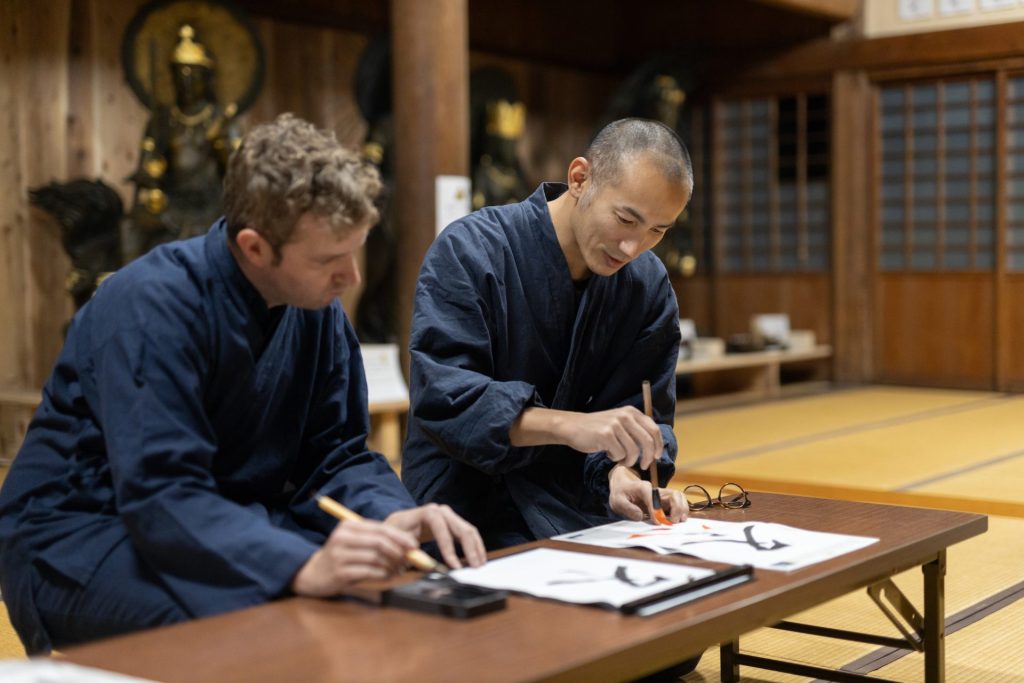
The demand for discarded rice husks
At the last Sustainability Conference, the topic of how to best maintain the slopes beside the rice fields was discussed, and a demonstration experiment was conducted using a ground cover plant called “Kurapia” that helps prevent weeds. The experiment is continuing, with the comment that “it takes some work, but it is gradually having an impact.”
Another issue that came up from the conference was the disposal of rice husks.
It was remarked that “New technology to turn rice husks into fertiliser allows us to make use of them, but it is difficult to balance with carbon neutrality because exhaust is emitted during transportation to the factory. There is also a large demand from major global cosmetics manufacturers for silica extracted from rice husks, which is said to be ideal for cosmetics, but transportation is still an issue.”
Additional possibilities, such as new prototypes for commercialisation, were shared at the meeting, which was a valuable chance to exchange ideas on how to keep the Sankyoson area sustainable.
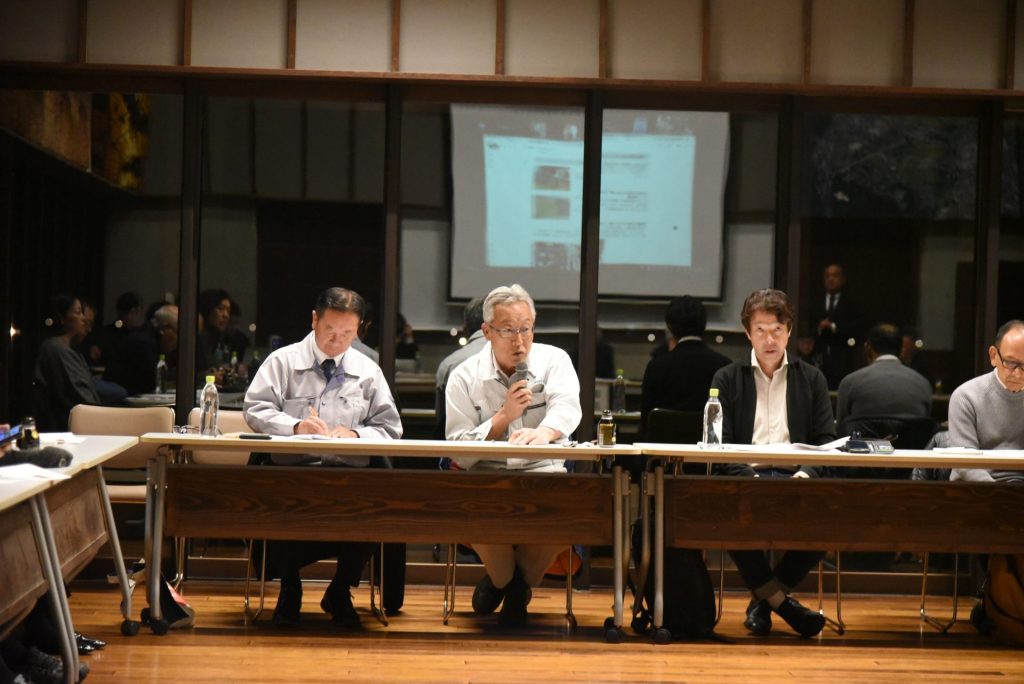
Survey and momentum towards “cultural landscape” registration
After reviewing the entire council rules, including the general provisions, the agenda turned to this year’s activities. The goal for this year and next year is to apply for registration as an “important cultural landscape” through the Agency for Cultural Affairs and a “nature coexistence site” through the Ministry of the Environment.
Initially introduced in 1990, the term “Important Cultural Landscapes” is a framework developed to evaluate landscapes created through the collaboration of humans and nature, particularly those formed based on traditional occupations related to agriculture, forestry, and fisheries.
Its characteristic is “dynamic preservation,” which means that even if an element of the landscape emerged recently, it can be preserved as long as it is considered necessary for maintaining the landscape. In other words, unlike World Heritage sites and Important Preservation Districts of Traditional Buildings, which must be left in their original form, this framework allows for changes and adaptions for modern society as long as they do not detract from the landscape.
While 73 important cultural landscapes have been registered nationwide, Toyama Prefecture does not have one yet.
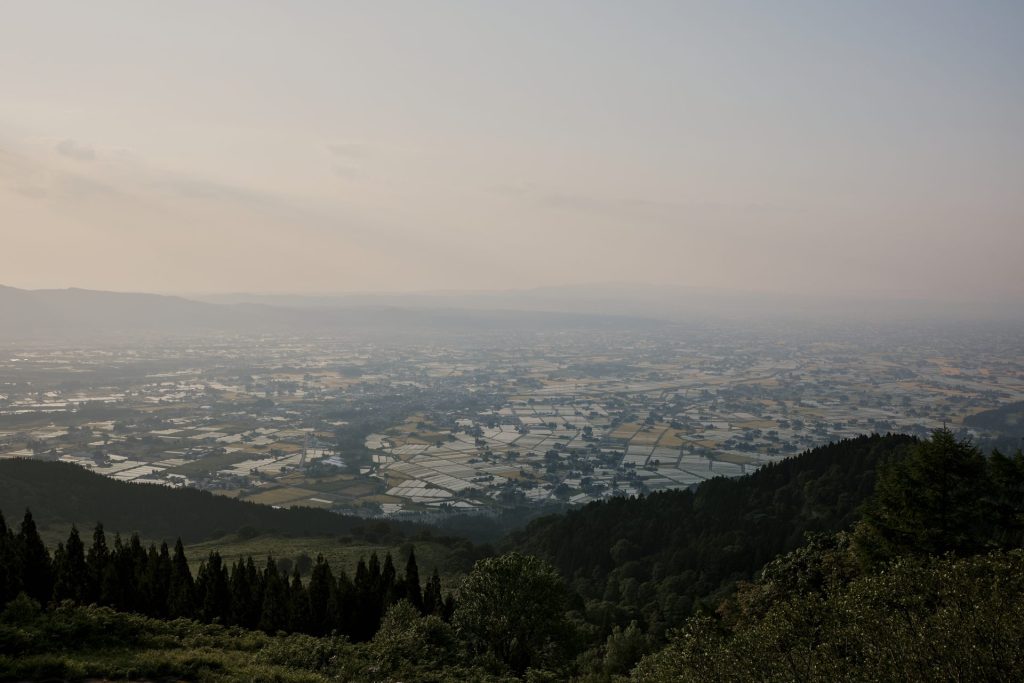
If the landscape of the Sankyoson, which was created through the collaboration between humans and nature and based on traditional livelihoods related to agriculture, forestry, and fisheries, is officially recognised as a “cultural landscape”, then the Sankyoson scattered village can be valued as a cultural landscape which truly represents Japan.
In fact, a survey report with the aim of registration was already prepared 15 years ago, but the application was not made due to the difficulty of reaching a consensus. Therefore, the council once again set its goal for this year’s surveys and research, and Professor Oku Keiichi of Toyama University will be conducting a social science survey to update the report and fill in any gaps.
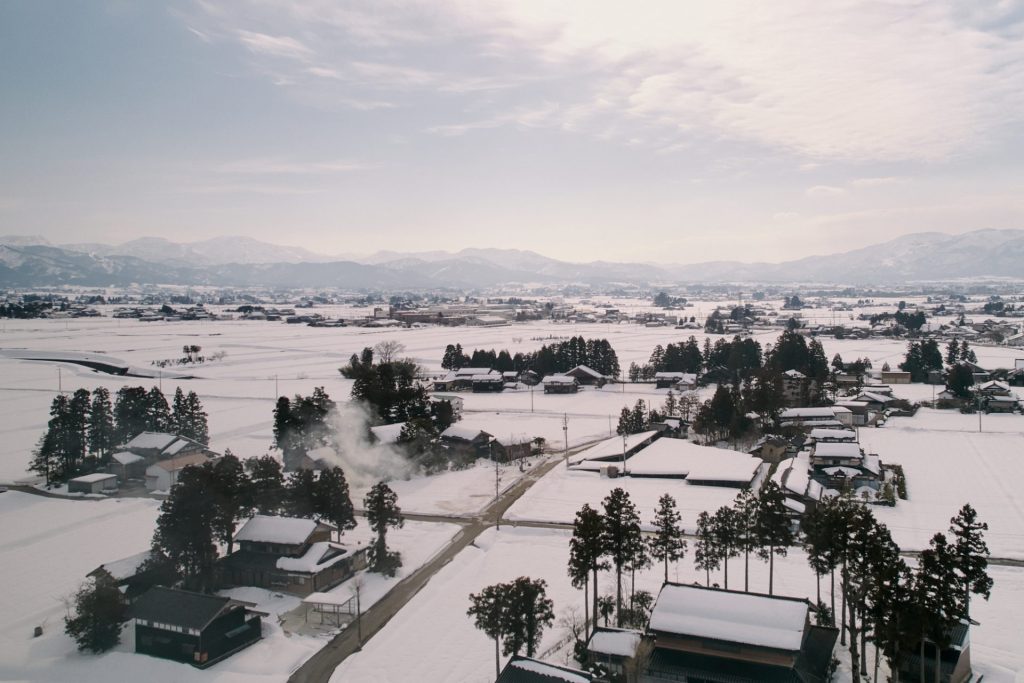
Objectively evaluating the biodiversity of the scattered settlement
Another way to understand the value of the scattered settlement is through the Ministry of the Environment’s framework of a “nature coexistence site.” These sites are government certified as areas where “biodiversity conservation is being promoted through private initiatives”, and the Ministry of the Environment suggested that this might be applicable to the Sankyoson.
With the cooperation of forest ecologist Takeshi Ise, we have already started three surveys to explore the possibility of registration.
The first is a survey to track the changes in “kainyo”, the small “house forests” surrounding each residence in the sankyoson, through AI analysis of satellite images. The second is recording the spatial distribution of organisms using motion capture and VOR recording equipment. Through this, we can elucidate how kainyo contribute to biodiversity. The third is a survey to estimate the carbon accumulation of trees in the kainyo and to numerically show the CO2 emissions if the trees were to be cut.
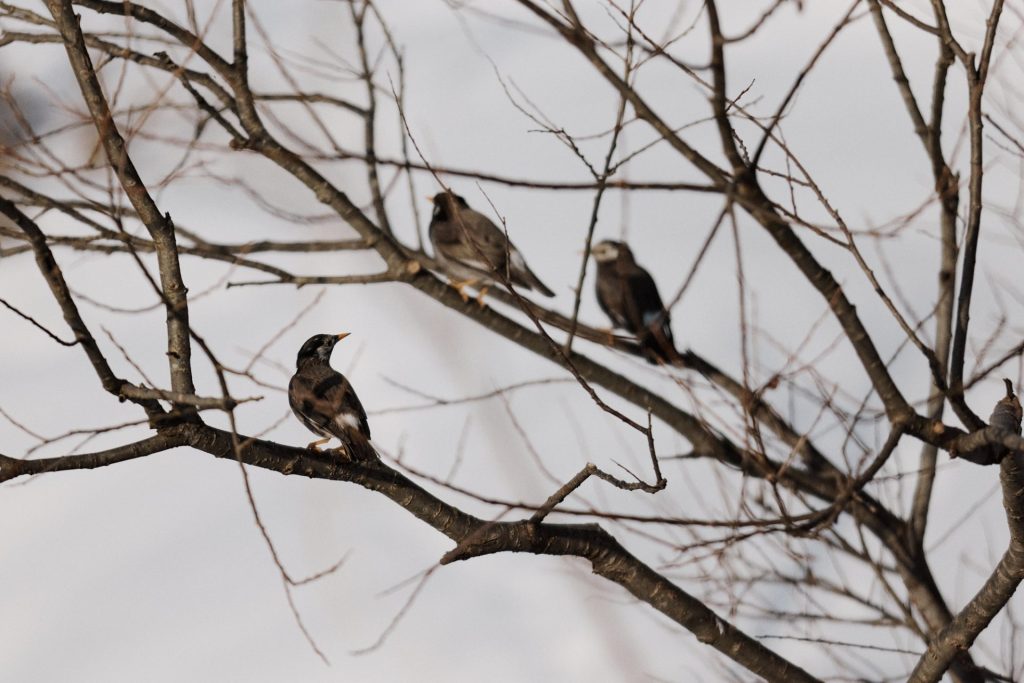
It is rare to be able to experience everything from pruning the material to manufacturing the product.
Other activities shared this year include study sessions and tours of the scattered village among members, the creation of a website introducing the scattered village in multiple languages, product development utilizing the resources of the scattered village, tours of vacant houses for overseas investors, and proposals for planting trees on residential premises suited to modern life.
Regarding the “Kainyo Care Support Tour” where you can experience pruning the kainyo trees
“Through kainyo pruning activities, we are able to make aroma oils using raw materials that are beneficial to both people and the environment. This is a welcome change from most essential oils, where issues of child labor and environmental damage caused through over-collection have been known to occur.”
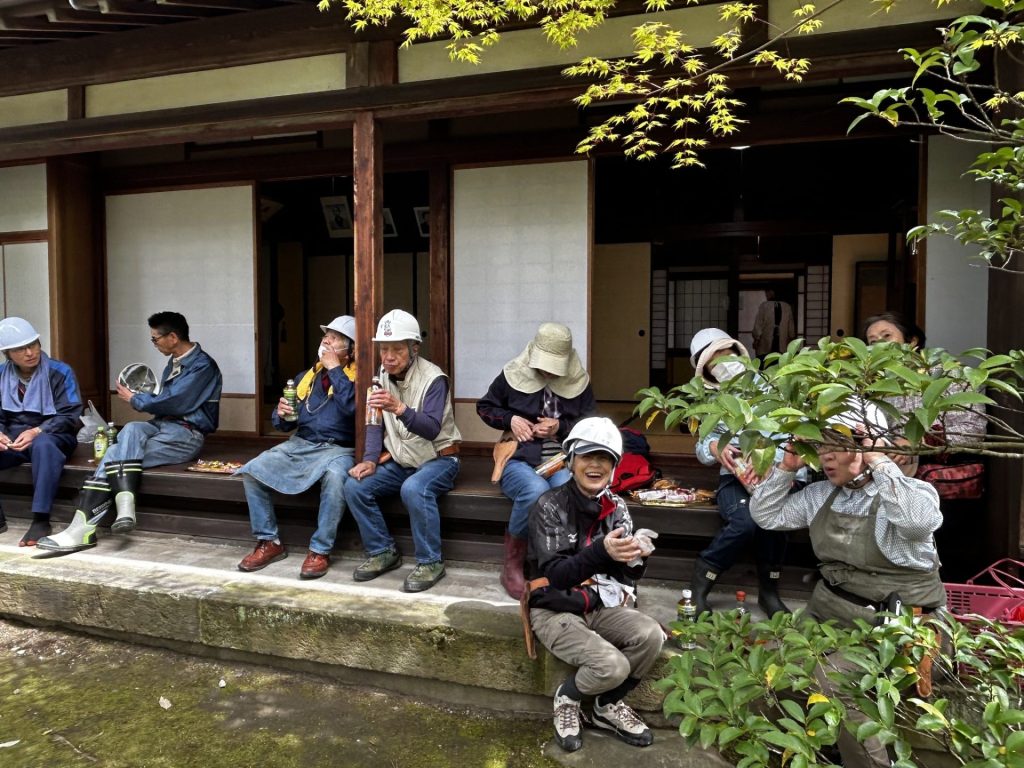
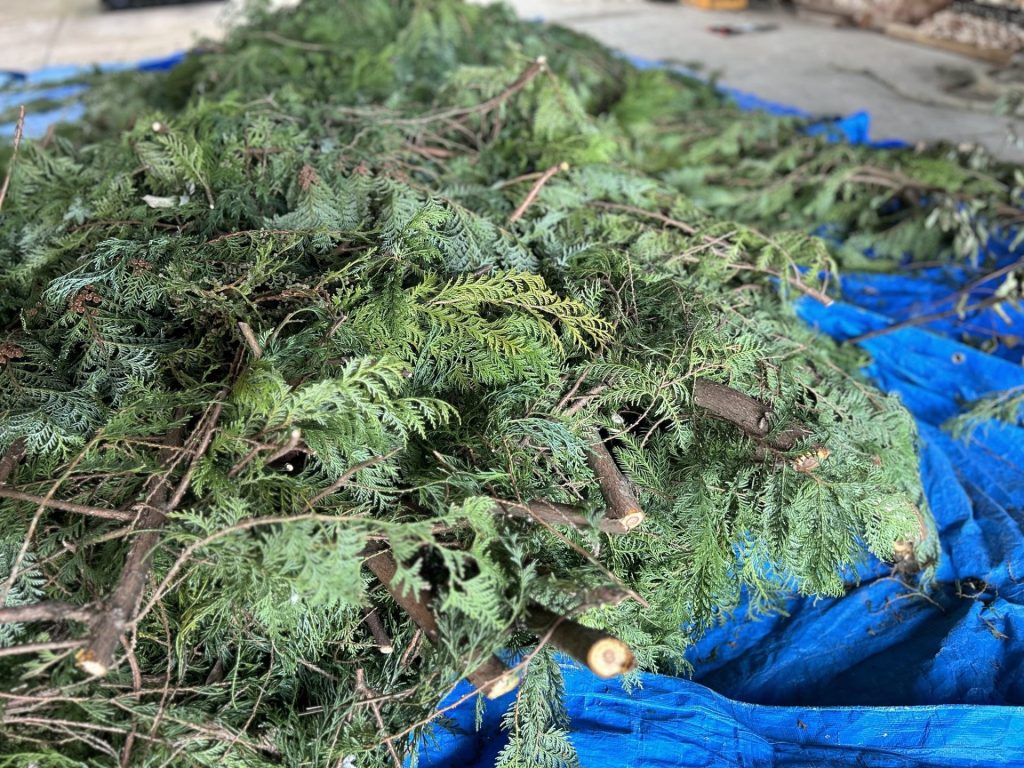
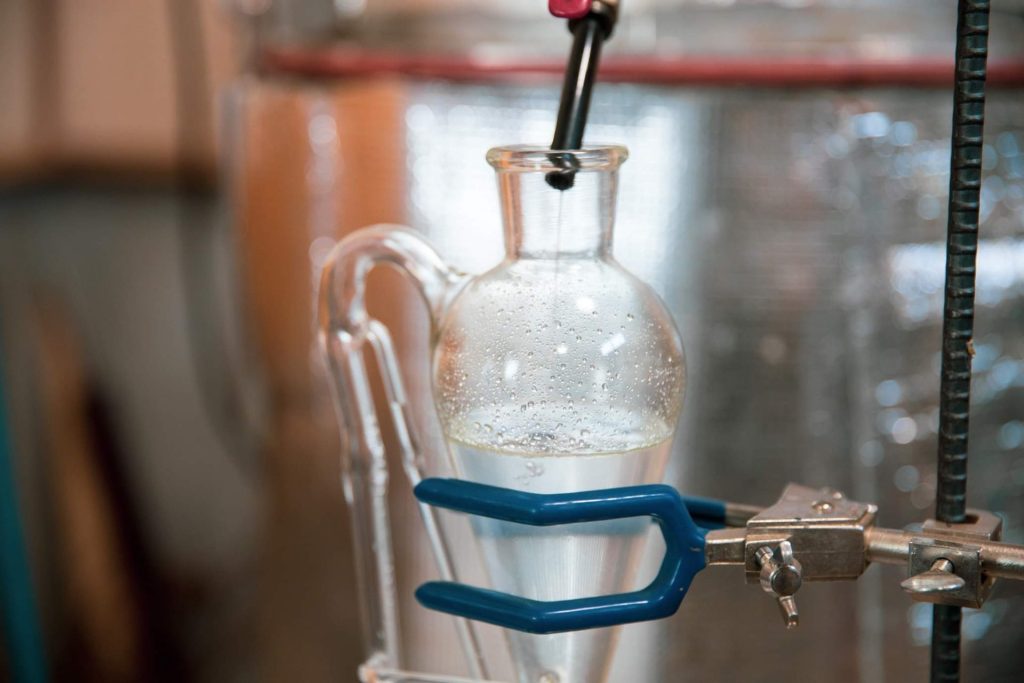
Participants noted that “There aren’t many opportunities to experience pruning branches and extracting essential oils.” and “I think there are many therapists who want to experience the whole process of oil being born from the land. I hope we can connect the local community with people who are looking for an experience unique to this area.”
Other projects that came to a close were the product development of Nekabetsu’s Takaoka copperware and the composting project of fallen leaves, showing that new avenues are opening up by bringing together a diverse range of people. The meeting concluded on this optimistic note.
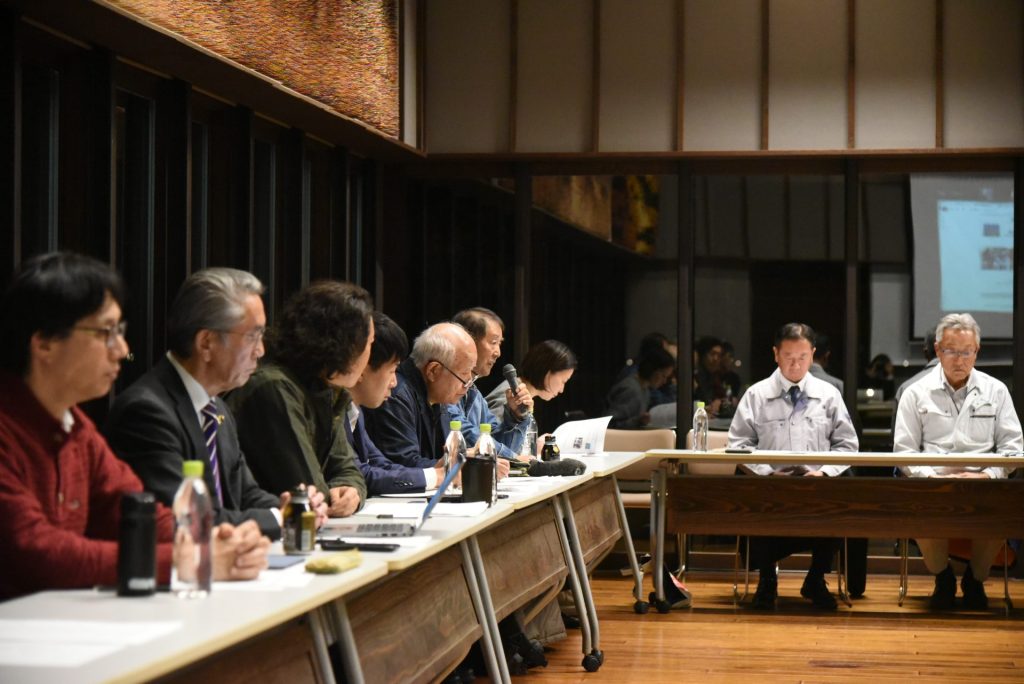
Holding meetings like this, sharing information with a variety of people, and carrying out our activities brings us closer and closer to realising the goals of regenerative tourism.
At the same time, the project is still in its infancy.
Preserving the Sankyoson scattered village truly requires the cooperation of many people, and conservation efforts are a never-ending process.
We will continue to monitor activities, and would be grateful if you would continue to participate and cooperate with Rakudo-An and the efforts of the Tonamino Sankyoson Preservation Council.

